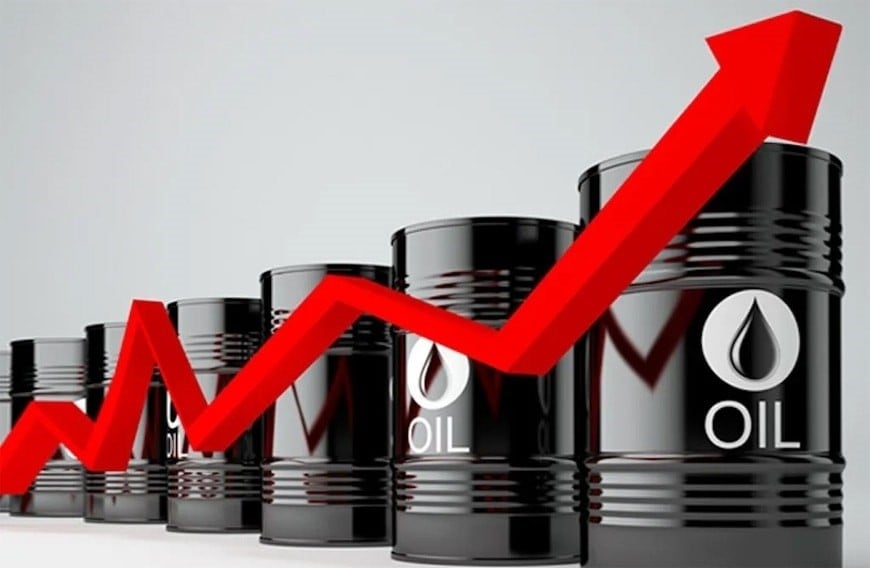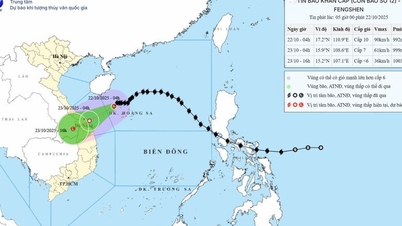World oil prices
According to Oilprice, Brent oil price increased by 0.59 USD (equivalent to 0.97%) to 61.60 USD/barrel, WTI oil price increased by 0.30 USD (equivalent to 0.52%) to 57.82 USD.

Both benchmarks had earlier fallen to their lowest levels since early May due to record US crude output and OPEC+ plans to increase supply, raising concerns about a possible supply glut in the coming months.
According to SEB senior commodities analyst Bjarne Schieldrop, US crude and distillate inventories remain relatively low, which is helping to ease pressure on oil prices. “Market fundamentals still suggest that the supply glut is not as great as initially feared,” said Bjarne Schieldrop.
Trade tensions between the US and China have also raised expectations that slowing global economic growth will curb oil demand, but both sides have made efforts to ease tensions.
US President Donald Trump said he hopes to reach a “fair trade deal” when he meets Chinese President Xi Jinping in South Korea next week.
Another notable development is that the price curve structure of Brent and WTI futures has begun to shift into contango, meaning that spot prices are lower than futures prices. This is generally seen as a sign of abundant short-term supply and falling demand.

However, the current level of contango remains a matter of debate. Earlier this month, the International Energy Agency (IEA) predicted that a supply surplus next year could push the market into a state of super-contango, meaning that the price gap between maturities widens dramatically, but that has yet to materialize.
“We see the market as oversupplied, but not yet seriously imbalanced. Oil prices are likely to stabilize around current levels, but remain under pressure if trade tensions escalate,” said Giovanni Staunovo, an analyst at UBS.
A preliminary Reuters survey released on Monday showed that U.S. crude oil inventories likely rose last week, a factor that could weigh on market sentiment in the short term.
The reality of the buildup in inventories has finally dawned, and prices will fall, creating a deeper contango in the market, encouraging investors to store oil to sell later when supplies tighten, profiting from higher prices, according to energy expert Scott Shelton of TP ICAP Group.
At the same time, Bloomberg quoted sources as saying that the US government is planning to buy 1 million barrels of crude oil to supplement the Strategic Petroleum Reserve. This move is considered an effort to support price stability and ensure national energy security in the context of market fluctuations.
Domestic gasoline prices
Domestic retail prices of gasoline on October 22 are as follows:
| - E5RON92 gasoline: No higher than 19,226 VND/liter - RON95-III gasoline: No higher than VND 19,903/liter - Diesel 0.05S: Not higher than 18,423 VND/liter - Kerosene: Not higher than 18,406 VND/liter - Mazut oil 180 CST 3.5S: Not higher than 14,371 VND/kg. |
The Ministry of Industry and Trade and the Ministry of Finance decided to adjust the retail price of gasoline and oil from 3 p.m. on October 16. Accordingly, gasoline and oil prices will increase or decrease depending on each product. Specifically, the price of E5RON92 gasoline increased by 88 VND/liter, RON95-III gasoline increased by 174 VND/liter, diesel oil decreased by 181 VND/liter, kerosene decreased by 28 VND/liter and fuel oil decreased by 437 VND/kg.
According to the Ministry of Industry and Trade, the world oil market in this period is affected by main factors such as: OPEC+ announced an increase in oil production in November but the increase was lower than expected; global oil demand tends to weaken; the Russia-Ukraine military conflict continues, Ukraine increases attacks on Russia's energy facilities... The above factors have caused world oil prices in recent days to fluctuate up and down depending on each product, but the downward trend is mainly.
Source: https://baolangson.vn/gia-xang-dau-hom-nay-22-10-quay-dau-tang-nhe-5062562.html



![[Photo] Award Ceremony of the Political Contest on Protecting the Party's Ideological Foundation](https://vphoto.vietnam.vn/thumb/1200x675/vietnam/resource/IMAGE/2025/10/22/1761151665557_giaia-jpg.webp)
![[Photo] Da Nang: Shock forces protect people's lives and property from natural disasters](https://vphoto.vietnam.vn/thumb/1200x675/vietnam/resource/IMAGE/2025/10/22/1761145662726_ndo_tr_z7144555003331-7912dd3d47479764c3df11043a705f22-3095-jpg.webp)


![[Photo] Prime Minister Pham Minh Chinh chairs meeting on nuclear power plant construction](https://vphoto.vietnam.vn/thumb/1200x675/vietnam/resource/IMAGE/2025/10/22/1761137852450_dsc-9299-jpg.webp)




























































































Comment (0)